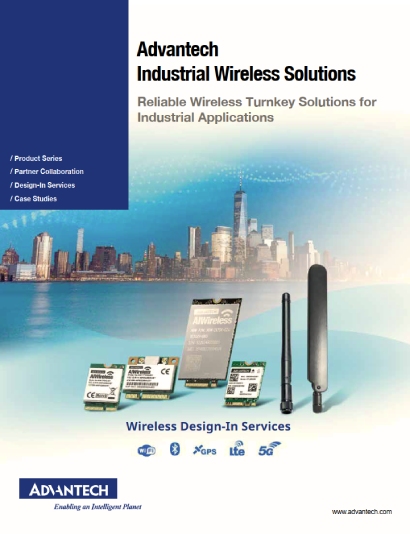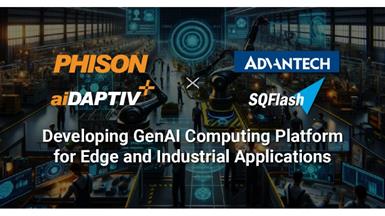Advantech Collaborates with Turkey ISSD to Deploy AI-Assisted Traffic Surveillance and Analysis
20/2/2567

Transportation plays a pivotal role in cultivating a content urban populace. Enhancing traffic efficiency to alleviate road congestion is essential to achieving convenient transportation. However, statistics show that most traffic jams at intersections make up 12%–55% of daily commute times. The complexity of traffic patterns further complicates the monitoring and dynamic tracking of vehicles. Globally, nations are actively adopting technology to build smart transportation systems that improve road services for commuters. In Turkey, ISSD has leveraged its expertise in smart traffic development and system integration to successfully implement real-time AI traffic monitoring solutions in over 750 intersections across cities including Bursa, Ankara, and Istanbul.
Challenge
As the pioneer in patenting the Dynamic Junction Control System
in Turkey, ISSD has established itself as a leading provider of
innovative and technology-focused traffic solutions. Over the years,
the company has provided intelligent transportation solutions such
as active traffic management, dynamic junction management, and
automated number plate recognition for many cities around the
world. With many years of experience, ISSD understands the various challenges in urban transportation. For instance,
surveillance cameras at urban road intersections must be positioned at a specific height and distance, necessitating
ultra-high resolution to accurately capture road conditions. Moreover, such systems need to analyze real-time traffic
flow, demanding superior image recognition and analytical capabilities. In this case, surveillance systems at 750
intersections across various cities in Turkey were equipped with traditional video processing units (VPUs), which are
inadequate for detailed road monitoring. This is because the VPUs have a lower image resolution and computational
efficiency, resulting in issues such as recognition errors and extended processing times. These issues were
compounded during nighttime or adverse weather conditions. To overcome these challenges, urban road monitoring
systems must be continuously optimized to enhance road services.
Solutions
Previously, ISSD had deployed road monitoring system servers in various Turkish cities, utilizing Advantech’s AIMB- 286 industrial motherboard powered by 9th Gen Intel® Core™ i processors, and an AI acceleration module embedded with four Intel Movidius VPUs. With the launch of Intel’s new generation of Arc GPUs, which combine AI computing engines and Deep Link technologies, Advantech immediately developed EAI-3100, the first Intel Arc A370M PCIe Graphics card in market. This makes EAI-3100 as the first choice for ISSD when upgrading its proprietary vehicle counting system. Currently, ISSD’s proprietary vehicle counting systems are deployed at major intersections across cities in Turkey.
The Advantech EAI-3100 graphics card, powered by the Intel Arc A370M with 128 XMX AI engines, delivers up
to 4.198 TFLOPS of performance. When paired with Intel Deep Link technology, it can further accelerate AI and
graphics computing performance to significantly reduce system latency during AI inferencing and real-time image
interpretation. Additionally, the EAI-3100 features robust cooling capabilities, preventing overheating during highspeed
image recognition.
The Intel Arc is ready to run newer and more sophisticated AI inference models, such as using OpenVINO toolkits,
to allow customers to utilize Yolov8 in accelerating the development of related applications. It excels at image
classification, object detection, and object segmentation, thereby AI model development for engineers, which enables
ISSD to more swiftly develop application-specific software at a lower cost, such as in their own VIERO-AI system,
enabling 24/7 AI visual reasoning and analysis of up to six lanes for smarter road monitoring.
Because both ISSD and Intel are long-term partners of Advantech, ISSD can rapidly upgraded its monitoring system
without concern of compatibility issues. Furthermore, Advantech’s proven post-sales consulting services help ISSD
quickly complete product verification to expedite the launch of next-generation road monitoring systems.
Results
The latest generation of traffic monitoring systems at intersections across Turkey now accommodate up to six cameras at 8K resolution. Furthermore, the new system, with its Intel Arc GPU, is able to perform more complex AI inferencing with 50% lower latency and 33% lower construction costs compared the previous system with the Intel Movidius VPU. This substantial reduction allows for smoother real-time analysis of intersection parameters. It can even per form dynamic image tracking to calculate the average speed of different vehicles. Thus, urban intersection monitoring centers can pivot to ease traffic flow in near real-time based on actual road conditions. This is particularly critical during peak periods when drivers are most likely to require alternative routes to avoid traffic congestion. Because the AI model required a substantial amount of storage and memory to store and load billions of parameters, Advantech also provided the SQF-SM8 SATA SSD and SQR-SD4N DDR4 memory to deliver an all-in-one solution.
In addition to major Turkish cities, ISSD has already deployed road monitoring systems using Advantech’s EAI-3100 graphics card in other countries, including Indonesia and Saudi Arabia. In the future, ISSD will continue to develop smart applications for road monitoring, such as promptly detecting speeding vehicles or intelligently controlling traffic lights, to reduce the need for manual interventions and achieve smarter urban traffic management. Furthermore, analyzing and predicting extensive traffic flow data at intersections can be used as a basis for governments to implement future urban transportation strategies.
Benefits
• Ready to run more complex and newer AI inference models
• 50% lower AI inference latency and 33% lower
construction costs
• More than four cameras support per intersection



-25/VEGA-P110_04----20231115102139.jpg)
/AIMB-286_3D_Banner-(1)20200217143211.jpg)
